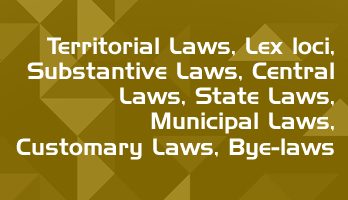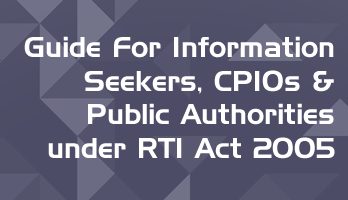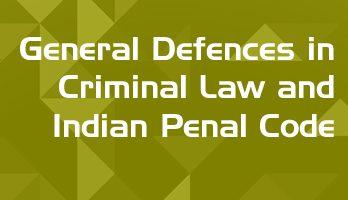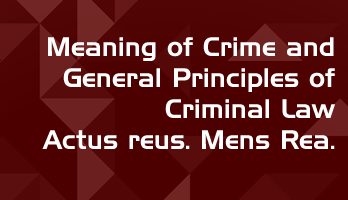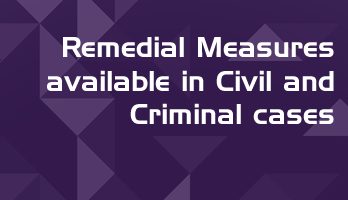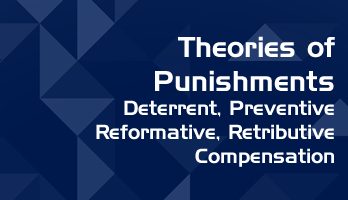Free Full Course Available on LawMint's YouTube Channel
How to Land Your Dream LLB Internship in a Top Law Firm
- Part 1 - Introduction
- Part 2 - Internship Planning
- Part 3 - Internship Research
- Part 4 - Building Your Profile
- Part 5 - The Email
- Part 6 - The Resume
- Part 7 - The Cover Letter
- Part 8 - The Interview
- Part 9 - Self Development
Practical and comprehensive course, with real examples and step-by-step analysis of the complete internship application process. Check out LawMint's YouTube channel now!
Alternative Dispute Resolution (ADR)
Alternative Dispute Resolution (ADR) (also known as external dispute resolution in some countries, such as Australia) includes dispute resolution processes and techniques that act as means for disagreeing parties to come to an agreement short of litigation. It is a collective term for the ways that parties can settle disputes, with (or without) the help of a third party.
Despite historic resistance to ADR by many popular parties and their advocates, ADR has gained widespread acceptance among both the general public and the legal profession in recent years.
In fact, some courts now require some parties to resort to ADR of some type, usually mediation, before permitting the parties’ cases to be tried (indeed the European Mediation Directive (2008) expressly contemplates so-called “compulsory” mediation.
The rising popularity of ADR can be explained by the increasing case load of traditional courts, the perception that ADR imposes fewer costs than litigation, a preference for confidentiality, and the desire of some parties to have greater control over the selection of the individual or individuals who will decide their dispute.
Arbitration and Conciliation Act, 1996
Arbitration
The process of arbitration can start only if there exist a valid Arbitration Agreement between the parties prior to the emergence of the dispute. As per Section 7, such an agreement must be in writing. The contract regarding which the dispute exists, must either contain an arbitration clause or must refer to a separate document signed by the parties containing the arbitration agreement.
The existence of an arbitration agreement can also be inferred by written correspondence such as letters, telex, or telegrams which provide a record of the agreement. An exchange of statement of claim and defence in which existence of an arbitration agreement is alleged by one party and not denied by other is also considered as valid written arbitration agreement.
Any party to the dispute can start the process of appointing an arbitrator and if the other party does not cooperate, the party can approach the office of Chief Justice for appointment of an arbitrator.
Except for some interim measures, there is very little scope for judicial intervention in the arbitration process. The Arbitration Tribunal has jurisdiction over its own jurisdiction. Thus, if a party wants to challenge the jurisdiction of the arbitration tribunal, it can do so only before the Tribunal itself. If the Tribunal rejects the request, there is little the party can do except to approach a court after the Tribunal makes an award.
Section 34 provides certain grounds upon which a party can appeal to the principal civil court of original jurisdiction for setting aside the ‘award’.
The period for filing an appeal for setting aside an award is over, or if such an appeal is rejected, the award is binding on the parties and is considered as a decree of the court.
The Arbitration and Conciliation Act, 1996 has been enacted to accommodate the harmonization mandates of UNCITRAL Model. To streamline the Indian legal system the traditional Civil Law known as Code of Civil Procedure, (CPC) 1908 has also been amended and Section 89 has been introduced. Section 89 (1) of CPC provides an option for the settlement of disputes outside the court.
It provides that where it appears to the court that there exist elements, which may be acceptable to the parties, the court may formulate the terms of a possible settlement and refer the same for Arbitration, Conciliation, Mediation or Judicial Settlement.
Due to extremely slow judicial process, there has been a big thrust on Alternate Dispute Resolution mechanisms in India. While Arbitration and Conciliation Act, 1996 is a fairly standard western approach towards ADR, the Lok Adalat system constituted under National Legal Services Authorities Act, 1987 is a uniquely Indian approach.
Conciliation
‘Conciliation’ is a less formal form of Arbitration. This process does not require existence of any prior agreement. Any party can request the other party to appoint a conciliator. One conciliator is preferred but two or three are also allowed. In case of multiple conciliators, all must act jointly. If a party rejects an offer to conciliate, there can be no conciliation.
Parties may submit statements to the conciliator describing the general nature of the dispute and the points at issue. Each party sends a copy of the statement to the other. The conciliator may request further details, may ask to meet the parties, or communicate with the parties orally or in writing.
Parties may even submit suggestions for the settlement of the dispute to the conciliator. When it appears to the conciliator that elements of settlement exist, he/she may draw up the terms of settlement and send it to the parties for their acceptance. If both the parties sign the settlement document, it shall be final and binding on both.
Note that in USA, this process is similar to Mediation. However, in India, Mediation is different from Conciliation and is a completely informal type of ADR mechanism.
To reduce the backlog of cases in Courts and to provide less expensive and speedy justice, Alternative Dispute Resolution (ADR) is now being encouraged. The Parliament of India has passed the Arbitration and Conciliation Act, 1996 and has amended the Civil Procedure Code, 1908 for this purpose.
To provide speedy justice at the grass root level, the Legal Services Authorities Act, 1987 has been passed to establish Lok Adalats. To provide justice at the door steps of village people the Gram Nyayalaya Act, 2009 has also been passed.
Lok Adalat
Etymologically, Lok Adalat means “People’s Court”. India has had a long history of resolving disputes through the mediation of village elders. The current system of Lok Adalats is an improvement on that and is based on Gandhian principles.
This is a non-adversarial system, whereby mock courts (called Lok Adalats) are held by the State Authority, District Authority, Supreme Court Legal Services Committee, High Court Legal Services Committee, or Taluk Legal Services Committee, periodically for exercising such jurisdiction as they thinks fit. These are usually presided by retired judge, social activists, or members of legal profession. It does not have jurisdiction on matters related to non-compoundable offences.
While in regular suits, the plaintiff is required to pay the prescribed court fee, in Lok Adalat, there is no court fee and no rigid procedural requirement i.e., no need to follow process laid down by Indian Civil Procedure Code or Indian Evidence Act, which makes the process very fast. Parties can directly interact with the judge, which is not possible in regular courts.
Cases that are pending in regular courts can be transferred to a Lok Adalat if both the parties agree. A case can also be transferred to a Lok Adalat if one party applies to the court and the court sees some chance of settlement after giving an opportunity of being heard to the other party.
The focus in Lok Adalats is on compromise. When no compromise is reached, the matter goes back to the court. However, if a compromise is reached, an award is made and is binding on the parties. It is enforced as a decree of a civil court. An important aspect is that the award is final and cannot be appealed, not even under Article 226 of the Constitution of India [which empowers the litigants to file Writ Petition before High Courts] because it is a Judgement by consent.
All proceedings of a Lok Adalat are deemed to be judicial proceedings and every Lok Adalat is deemed to be a Civil Court.
Permanent Lok Adalat for public utility services
In order to get over the major drawback in the existing scheme of organisation of Lok Adalats under Chapter VI of the National Legal Services Authorities Act, 1987, in which if the parties do not arrive at any compromise or settlement, the unsettled case is either returned back to the court or the parties are advised to seek remedy in a court of law, which causes unnecessary delay in dispensation of justice.
Chapter VI A was introduced in the Legal Services Authorities Act, 1987, by Act No.37/2002 with effect from 11-06-2002 providing for a Permanent Lok Adalat to deal with pre-litigation, conciliation and settlement of disputes relating to Public Utility Services, as defined u/sec 22 A of the Legal Services Authorities Act, 1987, at pre-litigation stage itself, which would result in reducing the work load of the regular courts to a great extent.
The Lok Adalat is presided over by a sitting or retired judicial officer as the chairman, with two other members, usually a lawyer and a social worker. There is no court fee. If the case is already filed in the regular court, the fee paid will be refunded if the dispute is settled at the Lok Adalat. The procedural laws, and the Evidence Act are not strictly followed while assessing the merits of the claim by the Lok Adalat.
Main condition of the ‘Lok Adalat’ is that both parties in dispute should agree for settlement. The decision of the Lok Adalat is binding on the parties to the dispute and its order is capable of execution through legal process. No appeal lies against the order of the ‘Lok Adalat’.
‘Lok Adalat’ is very effective in settlement of money claims. Disputes like partition suits, damages and matrimonial cases can also be easily settled before Lok Adalat as the scope for compromise through an approach of give and take is high in these cases.
Lok Adalat is a boon to the litigant public, where they can get their disputes settled fast and free of cost.
ADR at a Grass Roots level
Nyaya Panchayats
To combat the longstanding grievance of Aam Aadmi with respect to access to justice, we need to revitalize the ancient times practice of decentralized and participatory justice and resurrect ‘Nyaya Panchayats’ in the villages of every state in India.
The formulation of these village level dispute resolution forums will lead to the fulfilment of the constitutional goal under Article 39A of the Constitution. Nyaya Panchayats will empower more than 70% of the total India population, which resides in villages to exercise control over the nature of proceedings (to be conducted in local language thereby disrupting linguistic barriers) to amicably arrive at a mutually agreeable solution via the ADR methodology.
The reinstatement of these village courts in every Panchayat area of the village will lead to doorstep access to low-cost justice by the common man and positively impact the village economy in the long run. These Nyaya Panchayats will function as a “Community Based ADR” mechanism which is designed to be independent of a conventional court system that may be biased, expensive, distant or otherwise inaccessible to the economically disadvantaged rural population.
The Nyaya Panchayat Bill, 2006 reflects that the Panchayat should have five members, including one woman and one reserved post rotating between SC/ ST and OBC, which are elected directly by the voters of a territorial constituency. Reservation for women and socially backward classes in the village court will pave the path for equal opportunity to every person regardless of their caste and fair dispensation of justice.
There is no requirement for members to possess legal education as a prerequisite to contest for elections for the Nyaya Panchayat. Induction of one legally trained person would inspire confidence in the rural people and safeguard the application of substantive law.
Furthermore, to avoid partisan influences and undue political considerations from creeping into dispute resolution process, it must be ensured that no member is affiliated to any national or state political party. To ensure the accountability of Nyaya Panchayats to the state, the proposed legislative framework should include a provision for documentation of disputes resolved by the Panchayat, and provide for submission of these reports to the State Government.
Gram Nyayalayas
Another significant advance towards instilling ADR at grass root level may be made by the establishment of ‘Gram Nyayalayas’ as the lowest tier of judiciary in the rural areas.
The State Government is expected to establish one or more Gram Nyayalayas for every Panchayat or group of contiguous Panchayat at an intermediate level. Each ‘Gram Nyayalaya’ shall be headed by a Nyayaadhikari, who shall have the qualifications of a first class magistrate and possess exclusive and original jurisdiction over certain civil and criminal disputes.
The key highlight of this Bill is that it seeks to introduce ‘Court Annexed ADR’ process at the village level by way of these Gram Nyayalayas. In civil disputes the Nyayaadhikari will be empowered to adjourn proceedings and allow for conciliation between parties, subject to the rules devised by High Court.
Furthermore, petty disputes such as the disputes over agricultural land, the rights to cultivation and grazing on common pastures, disputes over cultivation, the right to draw water from canals or tube wells or incidental questions arising in villages are most suited to be determined by ADR procedure at village level.
Even in the 73rd Constitution Amendment Act, which conferred constitutional sanctity to Panchayati Raj Institutions there was no specific mention of establishing a ‘Nyaya Panchayat’. After the instant amendment, few States such as Bihar, Himachal Pradesh, Punjab, Uttar Pradesh and West Bengal inserted the provision for ‘Nyaya Panchayats’ in their new Panchayati Raj Acts.
Now there shall be social workers at the village level with the required qualification prescribed by the High Court. Hence, this bill, if enacted, will decentralize the tiers of justice delivery and reduce the burden of cases on the lower judiciary thereby paving the path for speedier and inexpensive justice for the economically and socially underprivileged people in India.
Questions
Explain the role of Lok Adalats in providing cheaper and speedy justice to the people.
In Lok Adalats, the technicalities of procedural law are not insisted upon. The matter or dispute is resolved through consensus instead of adversarial litigation. This helps in reducing the cost of litigation and in less amount of time as compared to regular Courts. In short, the justice delivered is faster and cheaper.
Define ‘Conciliation’.
‘Conciliation’ is a less formal form of Arbitration. This process does not require existence of any prior agreement. Any party to a dispute can request the other party to appoint a conciliator. If a party rejects an offer to conciliate, there can be no conciliation.
Free Full Course Available on LawMint's YouTube Channel
How to Land Your Dream LLB Internship in a Top Law Firm
- Part 1 - Introduction
- Part 2 - Internship Planning
- Part 3 - Internship Research
- Part 4 - Building Your Profile
- Part 5 - The Email
- Part 6 - The Resume
- Part 7 - The Cover Letter
- Part 8 - The Interview
- Part 9 - Self Development
Practical and comprehensive course, with real examples and step-by-step analysis of the complete internship application process. Check out LawMint's YouTube channel now!
Acknowledgement : This article is adapted from Swayam-NIOS course material.



